39 introduction to bonding worksheet
Introduction to Bonding. 12/15/2016 4 • The take home lesson on electro-negativity and bonding is this: – The closer together the atoms are on the P.T., the more evenly their e-interact, and are therefore more likely to form a covalent bond – The farther apart they are on the P.T., Free A-Level Chemistry revision materials. AS and A2 Level Chemistry worksheets, past papers and practice papers for Edexcel, AQA and OCR.
Oct 26, 2017 · Ionic bonding occurs when a metal transfers one or more electrons to a nonmetal in an effort to attain a stable octet of electrons. For example, a Lewis dot diagram can depict the transfer of an electron from otassium to chlorine. Calcium would need two chlorine atoms to get rid of its two valence electrons.
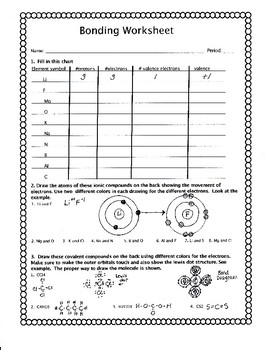
Introduction to bonding worksheet
WS Ionic Bonding Activity [KEY] Introduction. When atoms bond together to form ionic compounds, they will not combine with just any other atom. For example, two atoms that will never form an ionic bond are a sodium atom (Na) and a potassium atom (K). This is because both Na. 1+ and K. 1+ are cations, or positively-charged ions. Chemistry 501: Introduction to Bonding Instructions Before viewing an episode, download and print the note-taking guides, worksheets, and lab data sheets for that episode, keeping the printed sheets in order by page number. UNIT 6 - CHEMICAL BONDING Notes & Worksheets - Honors 1 INTRODUCTION TO CHEMICAL BONDING I. Types of Chemical Bonding A. _____: mutual electrical attraction between the nuclei and valence e- of different atoms that binds the atoms together B. Why do atoms bond together? 1.
Introduction to bonding worksheet. Bookmark; Glossary Terms; To understand life as we know it, we must first understand a little bit of organic chemistry. Organic molecules contain both carbon and hydrogen. Though many organic chemicals also contain other elements, it is the carbon-hydrogen bond that defines them as organic. Organic chemistry defines life. Just as there are millions of different types of living … Worksheet #4: Introduction to Covalent Bonds. A covalent bond is formed between nonmetal atoms. The nonmetals are connected by a shared pair of valence electrons. Remember, nonmetals want to gain valence electrons to reach a stable arrangement. If there are no metal atoms around to give them electrons, nonmetal atoms share their valence ... Some examples of compounds with ionic bonding include NaCl, KI, MgCl 2. Formation of sodium fluoride (NaF)The transfer of an electron from a neutral sodium atom to a neutral fluorine atom creates two oppositely charge ions: Na + and F –. Attraction of the oppositely charged ions is the ionic bond between Na and F. Effect on Physical Properties Bonding Worksheet #1: Introduction to Ionic Bonds. The forces that hold matter together are called chemical bonds. There are four major types of bonds. We need to learn in detail about these bonds and how they influence the properties of matter. The four major types of bonds are: I. Ionic Bonds III. Metallic Bonds. II. Covalent Bonds IV.
Free GCSE Chemistry revision materials. Grade 9-1 GCSE Chemistry worksheets, past papers and practice papers for Edexcel, AQA and OCR. Conceptualize Science with Boardworks From cells to the solar system, get access to thousands of highly engaging and interactive resources that help you teach extraordinary lessons Science in Action with Boardworks Explore science with engaging and varied teaching material like exciting interactive activities, dynamic animations, summary quizzes and virtual experiments. Metallic Bonding: The Electron-Sea ... This worksheet and quiz will let you practice the following skills: ... Go to Experimental Chemistry and Introduction to Matter Ch 2. Introduction to chemistry This worksheet will help you in understanding the basic fundamental of chemistry ... Apply to the whole worksheet . More Chemistry interactive worksheets. Classify atoms, molecules, elements, and compounds by LeeChem040: Types of Bonds (Ionic Bonding) by palmergm: CHEMICAL REACTIONS - SYNTHESIS AND DECOMPOSITION by ...
Worksheet #2: Introduction to Covalent Bonds. A covalent bond is formed between nonmetal atoms. The nonmetals are connected by a shared pair of valence electrons. Remember, nonmetals want to gain valence electrons to reach a stable arrangement. If there are no metal atoms around to give them electrons, nonmetal atoms share their valence ... Which of the following molecules has the shortest bond length? a) N2. b) O2 c) Cl2 d) Br2 e) l2 Which of the following has zero dipole moment (i.e. is non-polar molecule)? a) H2O b) NO21- c) CCl4 d) SO3 2- e) HF Ionic bonds are the electrostatic attraction between oppositely charged atom. What determines their ionic strength? Chemical bonds hold molecules together and create temporary connections that are essential to life. Types of chemical bonds including covalent, ionic, and hydrogen bonds and London dispersion forces. Chemistry – Bonding Packet Name:_____ Hr:_____ Page 5 5 Updated 3/31/2017 Worksheet #4: Introduction to Covalent Bonds A covalent bond is formed between nonmetal atoms. The nonmetals are connected by a shared pair of valence electrons.
Check your understanding of metallic bonding with this interactive quiz and printable worksheet. These practice questions will help you review the...
Chemical Bonding - Ch. 6 & 7. Worksheet - Molecular Compounds Worksheet - Ionic Compounds Worksheet - Acids Lab - Ionic vs. Covalent Activity - Formula Fun! Molecular Structure - Ch. 6. Worksheet - Lewis Diagrams Worksheet - Molecular Geometry Lab - Molecular Structure Project - Molecular Model - Evaluation Sheet
UNIT 6 - CHEMICAL BONDING Notes & Worksheets - Honors 1 INTRODUCTION TO CHEMICAL BONDING I. Types of Chemical Bonding A. _____: mutual electrical attraction between the nuclei and valence e- of different atoms that binds the atoms together B. Why do atoms bond together? 1.
Chemistry 501: Introduction to Bonding Instructions Before viewing an episode, download and print the note-taking guides, worksheets, and lab data sheets for that episode, keeping the printed sheets in order by page number.
WS Ionic Bonding Activity [KEY] Introduction. When atoms bond together to form ionic compounds, they will not combine with just any other atom. For example, two atoms that will never form an ionic bond are a sodium atom (Na) and a potassium atom (K). This is because both Na. 1+ and K. 1+ are cations, or positively-charged ions.





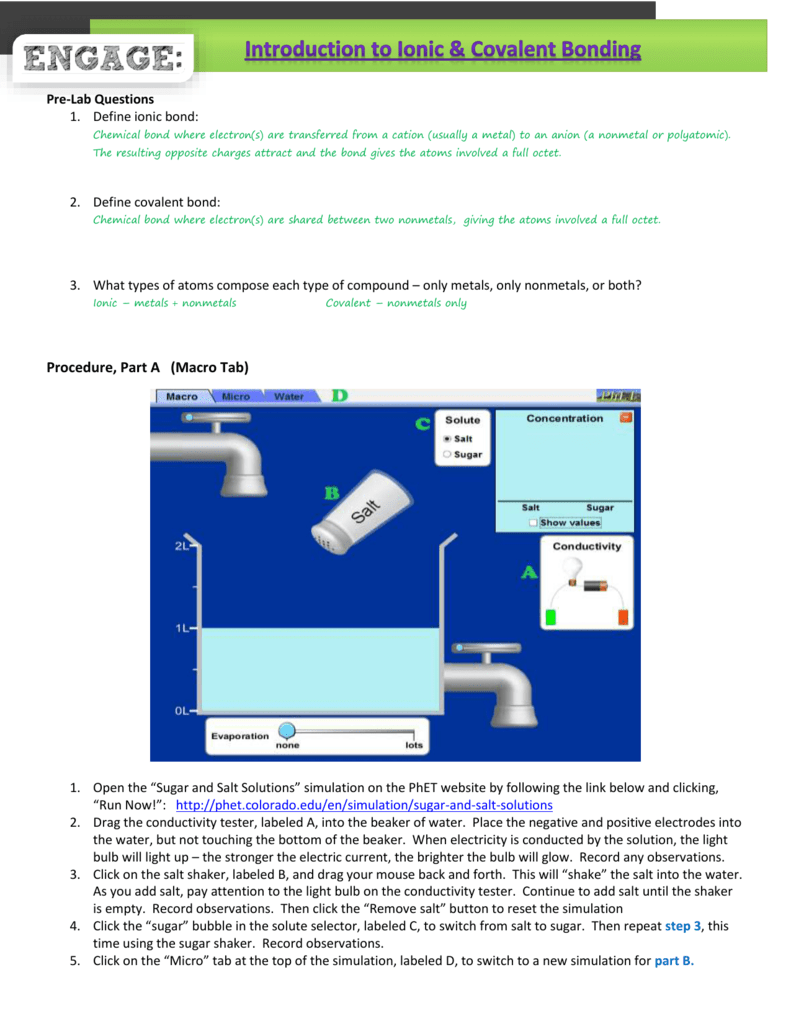



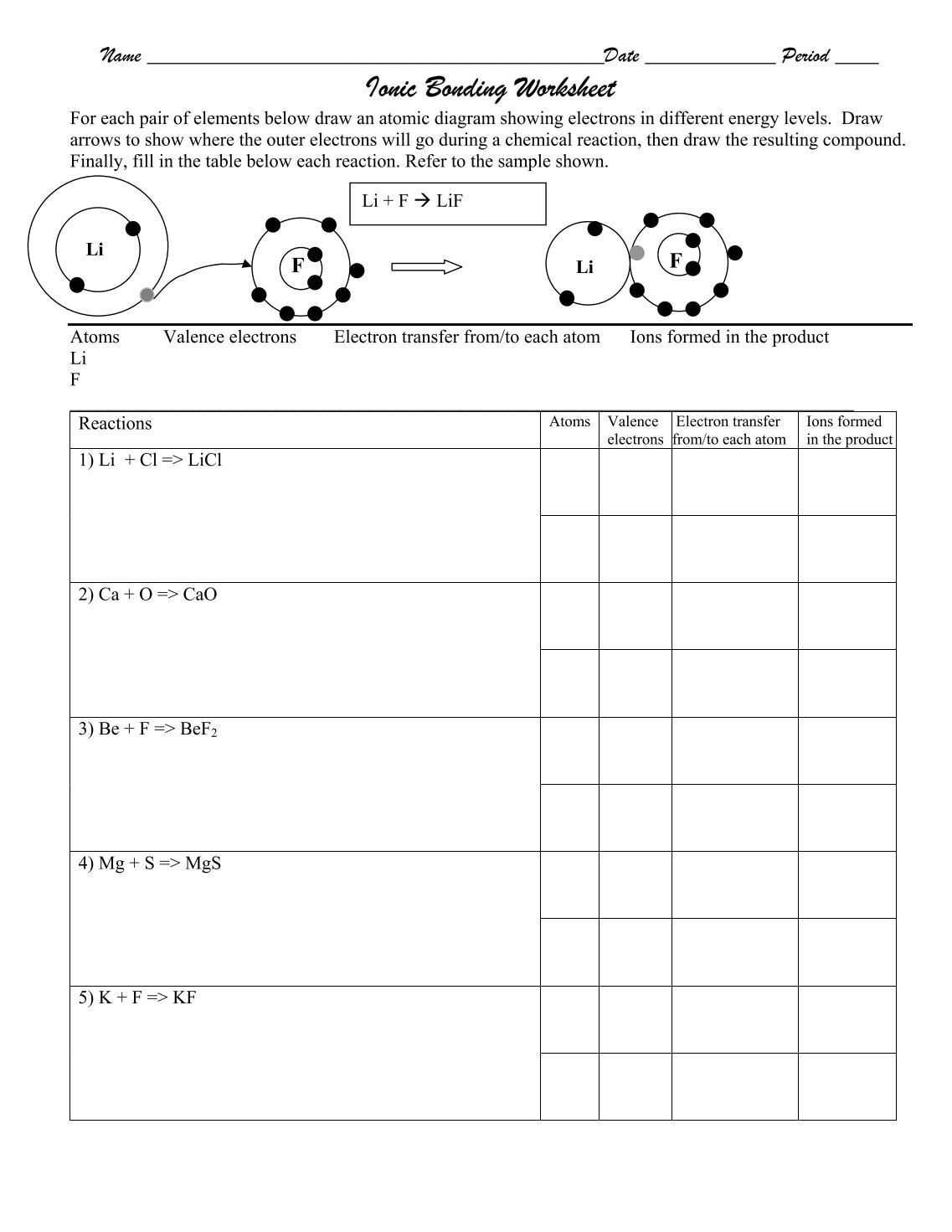

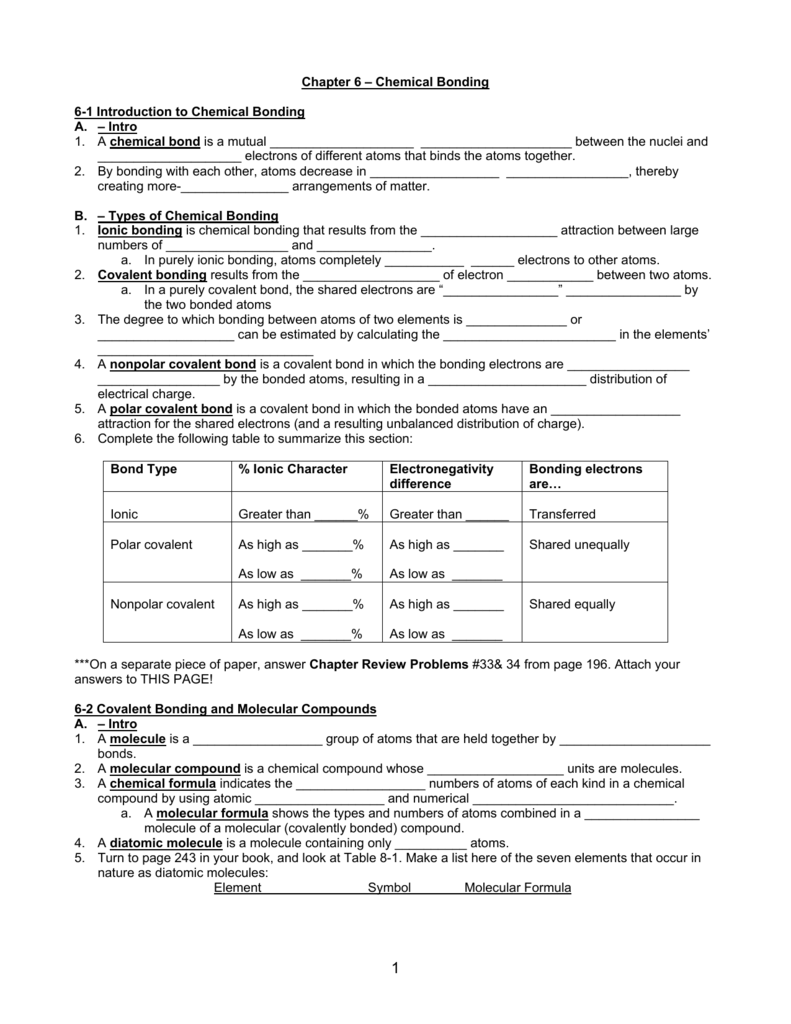
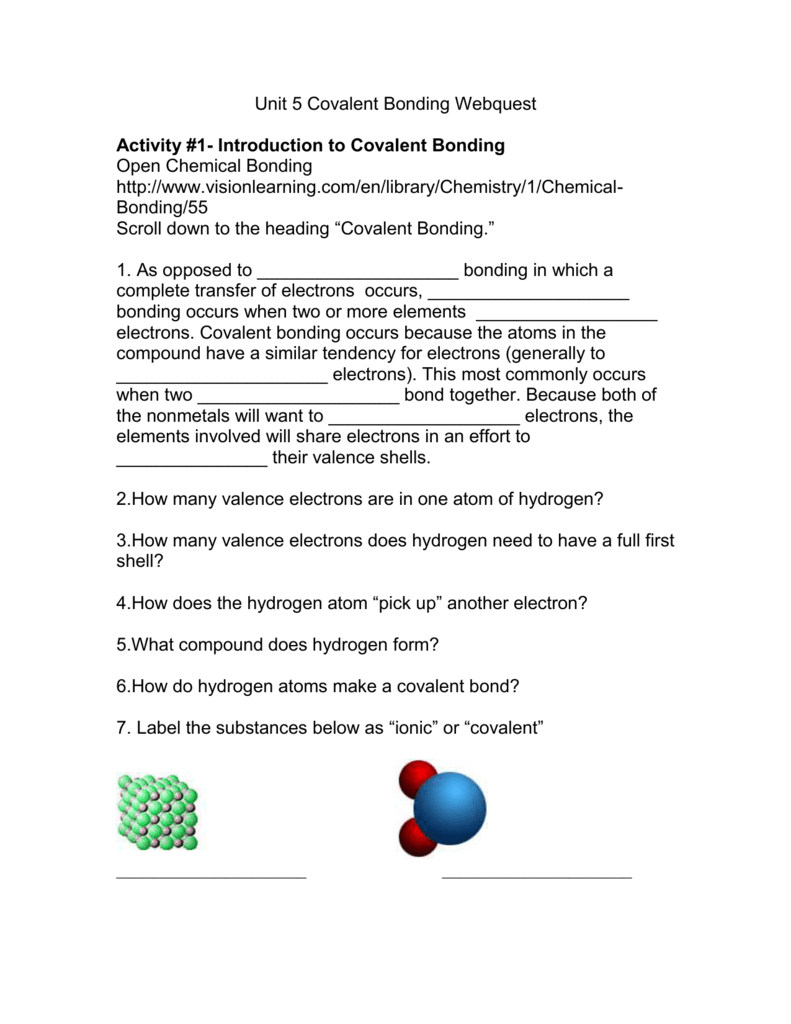



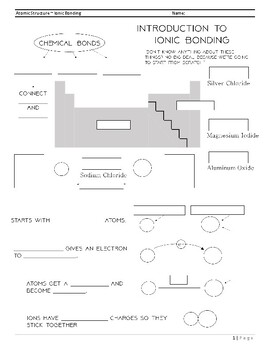
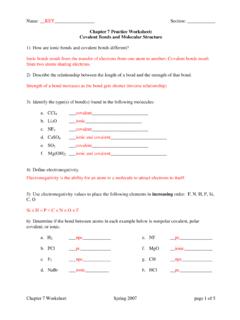


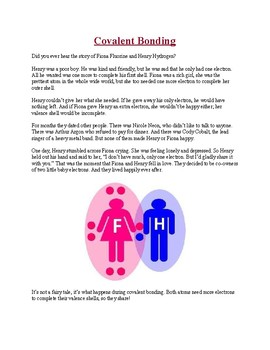



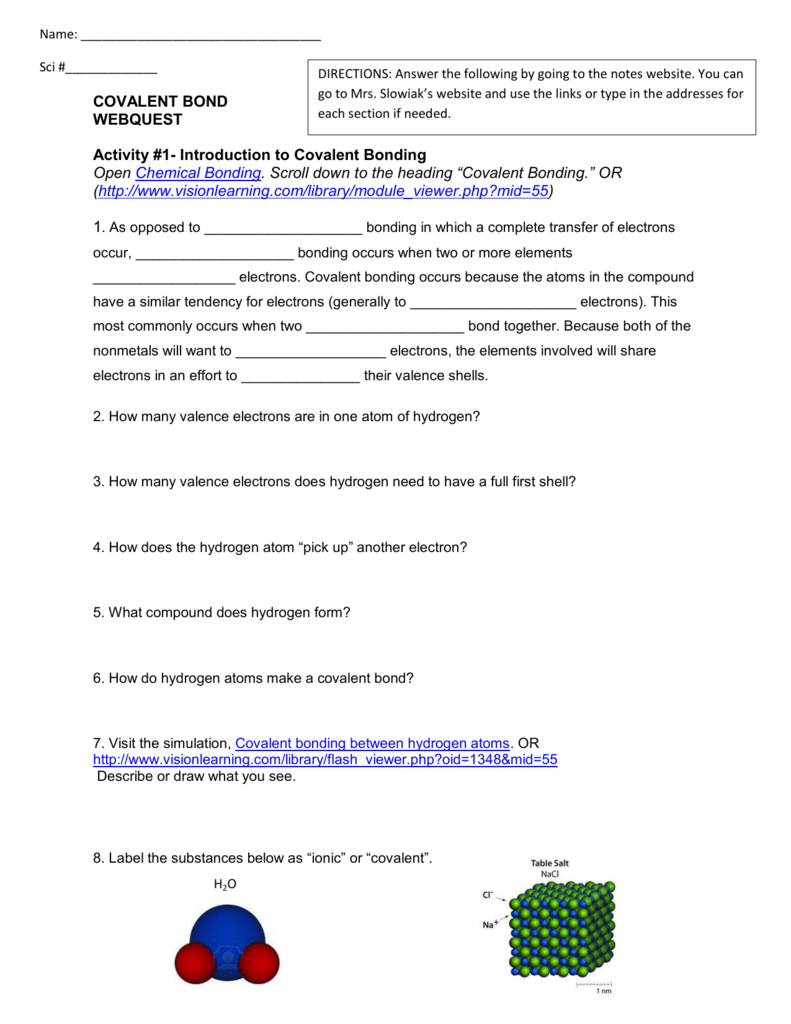


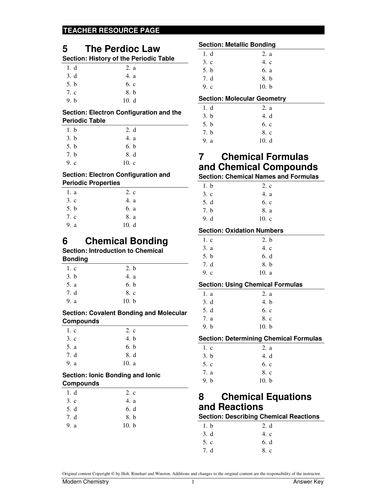




0 Response to "39 introduction to bonding worksheet"
Post a Comment